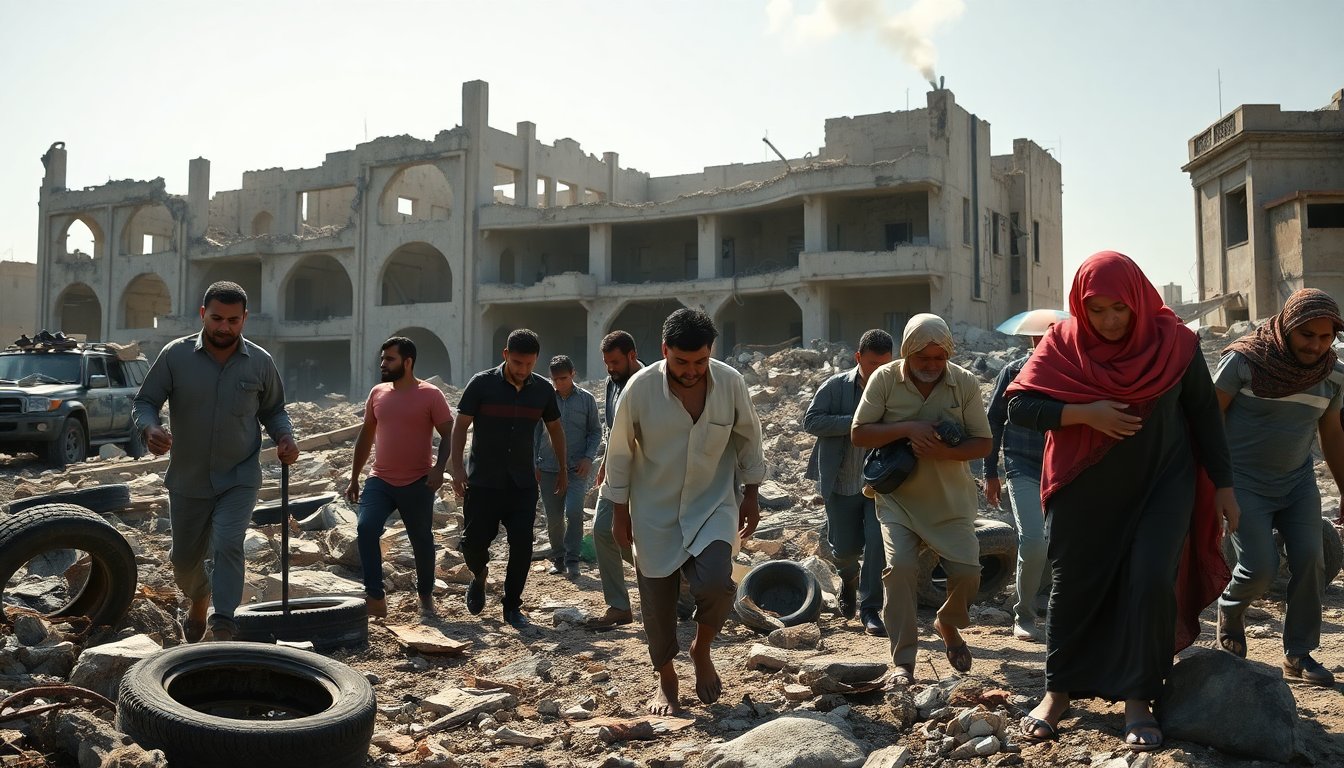Table of Contents
The conflict in Gaza has intensified, continuing to impact the region despite a recent ceasefire agreement between Israel and the Palestinian group Hamas. This truce, intended to end two years of violence, has not resulted in the anticipated peace. The situation remains volatile, with ongoing reports of Israeli attacks within Gaza.
A ceasefire was established on October 9 as part of U.S. President Donald Trump’s 20-point peace initiative, but many contentious issues were deferred for later discussions. Although fighting has paused temporarily, the fundamental tensions and disputes are unresolved.
Violations of the ceasefire
In the weeks following the ceasefire, various sources, including the Gaza Ministry of Health, reported nearly daily Israeli military actions. Since the agreement took effect, over 300 Palestinians have reportedly died, with nearly 900 others injured due to continued Israeli assaults.
The Gaza Government’s media office claims that Israel has committed close to 500 ceasefire violations, including direct attacks, military incursions, and destruction of civilian infrastructure. Many incidents occurred near a designated boundary known as the yellow line, established as part of the ceasefire agreement. Israeli Defence Minister Israel Katz has warned that any attempts to breach this line would elicit retaliatory fire from Israeli forces.
Claims and counterclaims
In a recent incident, reports suggested that Israeli forces advanced the yellow line by approximately 300 meters into eastern Gaza City. However, the Israeli military denied these claims, stating that such reports were inaccurate. This back-and-forth between the two factions underscores the difficulties in monitoring and enforcing the ceasefire agreement.
Additionally, Israeli aerial strikes persistently target various regions, including areas crowded with displaced families. Recent reports indicated that at least 28 Palestinians were killed in a series of attacks, with many others injured. The Gaza Health Ministry continues to provide grim updates on the human toll of this conflict, which has now claimed nearly 70,000 Palestinian lives since hostilities began.
International response and implications
The international community has closely monitored developments in Gaza, expressing growing concern over the humanitarian crisis stemming from ongoing violence. The United Nations Security Council recently passed resolution number 2803, aiming to establish a framework for peace and propose an international protection mechanism for Gaza. However, this initiative has drawn criticism from Hamas and other Palestinian factions, who argue it legitimizes the ongoing occupation and undermines their political and humanitarian rights.
Experts have analyzed the implications of this resolution, highlighting potential threats to the self-determination of the Palestinian people. Khaled Elgindy, a scholar at the Quincy Institute, emphasized the challenges this presents to the Security Council and the broader international community, which must navigate the complex dynamics of the conflict.
Continuing violence and its impact
Despite assurances from supporters of the resolution that it could lead to lasting peace, the reality on the ground suggests otherwise. Since the ceasefire was established, multiple reports indicate Israel has violated the agreement hundreds of times, resulting in rising casualties among Palestinian civilians. The ongoing violence raises serious questions about the ceasefire’s effectiveness and the potential for a sustainable resolution to the conflict.
The situation in Gaza remains tense, with the possibility of further escalation looming. If decisive action is not taken by the international community, the fragile ceasefire may collapse, leading to renewed violence that could threaten regional stability. The world observes closely as both sides navigate this complex landscape, hoping for a resolution that brings peace to the long-suffering people of Gaza.


